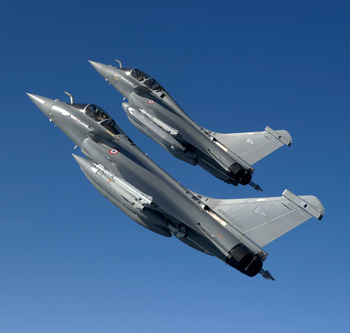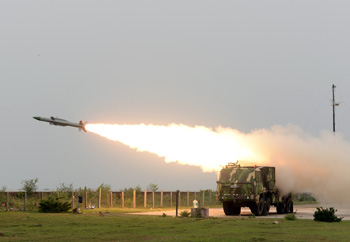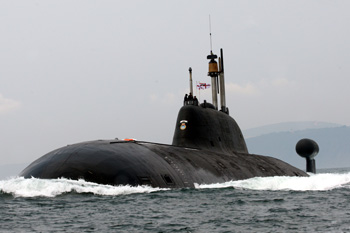INDIAN ARMED FORCES CHIEFS ON
OUR RELENTLESS AND FOCUSED PUBLISHING EFFORTS

SP Guide Publications puts forth a well compiled articulation of issues, pursuits and accomplishments of the Indian Army, over the years

I am confident that SP Guide Publications would continue to inform, inspire and influence.

My compliments to SP Guide Publications for informative and credible reportage on contemporary aerospace issues over the past six decades.
- Prime Minister witnesses 'Bharat Shakti' – a Tri-Services Firing and Manoeuvre Exercise in Pokhran, Rajasthan
- Interim Defence Budget 2024-25 — An Analysis
- Union Defence budget 2024
- Prime Minister Modi Commemorates Indian Navy Day in a Grand Ceremony
- Prime Minister Modi Flies in the LCA Tejas
- New Chapter in India-Italy Defence Ties
- Airpower beyond Boundaries
Dilemma of Defence Spending
A report of the Parliamentary Committee on Defence stated that the enhancement in the Defence Budget for the year 2016-17 over the previous year, was meagre and insufficient.
 |
By Air Marshal B.K. Pandey (Retd) Former Air Officer Commanding-in-Chief of Training Command, IAF |



On March 10, 2016, a senior functionary of the Indian Air Force (IAF), stirred a hornet's nest when in a press conference on the eve of Exercise Iron Fist, he stated rather plainly that the IAF did not have the capability in terms of combat aircraft and other assets to fight a two-front war i.e. in the event of a conflict with China and Pakistan at the same time. More recently, in fact just a few days ago, the Defence Secretary G Mohan Kumarmade a candid admission before a Parliamentary Committee on Defence that "India's military spending as planned in the defence budget for 2016-17,is not as per the requirements of the Indian armed forces." While this perception of the Defence Secretary is shared by most analysts and defence experts in the country and the state of the Indian armed forces is definitely not a closely guarded secret, what is perhaps more intriguing is that the statement by the Defence Secretary is in direct conflict with the position taken by the Minister of Defence Manohar Parrikar who had stated publicly earlier on that the allocation for defence in the national budget for 2016-17 is adequate. However, the Parliamentary Committee on Defence did table a report in the Parliament that held a position that was in consonance with the views expressed by the Defence Secretary. The report explicitly stated thatthe enhancement in the allocation to the Ministry of Defence in the national budget for the financial year 2016-17 over the previous financial year, was indeed meagre and insufficient to fulfil the basic needs of the Indian armed forces, let alone meet with the demands of their urgently required modernisation.
National Security at Stake
With sustained economic growth, India is now reckoned to bea regional power and has aspirations of attaining the status ofa global power to find its rightful place in the comity of nations. Along with the rise in the economic status of the nation, it is necessary that its military capability must also be enhanced not only to cater for the threats perceived from the well known adversaries, both in the near and long term; but more importantly, to safeguard the security interests of the nation that would continue to expand in consonance with the growth of the economy and extend well beyond the boundaries of the nation.
The programme for the modernisation of the Indian armed forces at this point in time, appear to be in a state of aimless drift.
As per data available in the reportof the Parliamentary Committee on Defence, the expenditure on defenceas a percentage of government expenditure has been on the downslide in the last fifteen years or so. From a high of 15.24 per centin the financial year 2000-2001, it has progressively declined to 12.59 per centin budget estimates for the financial year 2016-2017. The operational capability of the Indian armed forces has suffered constant erosion over the last few decades. The Indian Amy has not been able to induct modern artillery guns after the procurement of the Bofors guns from Sweden in the 1980s that unfortunately led to an ugly controversy that haunts the nation even today. The combat arms of the Indian Army have been overtaken by obsolescence as they have not been replaced in the last over six decades. The Indian Navy is woefully short of submarines and also needs to replace the fleet of carrier-borne combat aircraft. The Indian Navy of today is not well equipped to securethe nation's Exclusive Economic Zone, the 7500 km of coastline as well as the Sea Lines of Communication. It is doubtful whether in its present state, the Indian Navy would bein a position to confront the Chinese Navy in the Indian Ocean if the need arose for it to do so.
The combat fleet of the IAF is dwindling rapidly and estimates are that by the end of this decade, on account of the mandatory phasing out of the life expired older fleets of MiG-21 and Mig-27 aircraft, the fleetwill be down to around 60 per cent of its authorised strength. Six years ago, the then Chief of the Air Staff had statedpublicly that fifty per cent of the equipment in the IAF was obsolete. The state of affairs has in fact worsened since the erstwhile CAS had made this observation public as efforts by the IAF to induct 126 of the medium multi-role aircraft (MMRCA) initiated in 2002, has not been successful. Eight years after the Request for Proposal for the MMRCA was issued for which the Rafale combat jet from Dassault Aviation of France was selected by the IAF, the tender was cancelled. Even the supplementary effort initiated personally by Prime Minister Narendra Modi to procure 36 Rafale jets through a direct deal with the Government of France, continues to be plagued with uncertainty. Even if the 36 Rafale jets arrive, with just two squadrons added to the combat fleet, it will only provide partial relief to the difficulty the IAF is in with regard to the erosion of its operational capability as its existing fleet of combat aircraft will be deficient by 17 squadrons or around 300 platforms by the end of this decade.
Cumulative Neglect
Over the years, successive governments in the past have through lack of focus and concern, left the Indian armed forces somewhat crippled with no option before them but to fight with what they have. One estimate indicates that if the Indian armed forces are to be equipped with contemporary military hardware to give them the capability to successfully cope with the challenges they may be called upon to face in the future, the total outlay for capital acquisitions could be to the tune of Rs 28,00,000 crore. The huge chasm between aspirations of the Indian armed forces and reality can well be gauged from the fact that that the allocation for the Ministry of Defence in the national budget for the financial year 2016-17 stands at Rs 2,49,099 crore. The problem also gets compounded by the inability of the Service Headquarters to fully utilise the allotted funds within the financial year owing to the infinitely complex and time consuming procurement procedures laid down for the procurement of military hardware and the painfully slow decision making especially by the bureaucracy at the level of the Ministries of Defence and Finance. Besides, the government is not willing to allow funds that remain unspent in the financial year to be carried over to the next year. With the passage of time, challenges in respect of expenditure on defence procurement get further aggravated on account of the progressive and steep hike in the cost of military hardware. The way things are, the gap which appears to be ever widening, can never be closed with expenditure on defence being limited to less than two per cent of GDP. As years roll by and continued neglect by the government and its indifference to reality, the problem will only get worse thus seriously undermining national security.
The Menace of Misdemeanour
The programme for the modernisation of the Indian armed forces at this point in time, appear to be in a state of aimless drift. The long term strategic master plan for the modernisation of the Indian military has never really been articulated clearly at any stage by any government in power at the centre. Also, there has hardly been any sensible public debate in the media on this issue. The Indian armed forces had great hopes of the NDA government in this regard; but despite the rhetoric emanating frequently from the highest echelons of the political leadership, there has been little movement on the ground. Another problem that could emanate from the fact that the government seems to have gone into an overdrive to unearth scams in the procurement of military hardware and the ensuing and unhealthy political slugfest. Whether or not the nation will ultimately benefit from this exercise, is difficult to predict at this stage. However, one fallout of this exercise is certain in that it is likely to have a deleterious effect on the on the ongoing as well as future programmes for the procurement of military hardware. Both the civilian bureaucracy and the military hierarchy responsible for processing proposals of high-value military hardware, will be chary of taking decisions for fear of being implicated in the future is some misdemeanour, perceived or otherwise.





